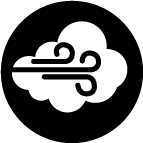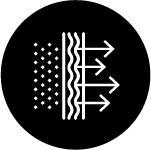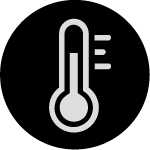Background
OHCOW was asked by worker and management representatives to conduct a hazard assessment at a manufacturing facility. The concern was potential exposure to contaminants encountered by workers when spray painting windows. The issues were:
- the type of PPE available to workers: respiratory, hand and skin protection
- ventilation in the spray painting area
- the composition of cleaning and painting products
- work practices such as the number of workers allowed in the spray booth
- elevated exposure risks during maintenance tasks such as changing the spray booth exhaust filters.
Intervention
An OHCOW Occupational Hygienist carried out extensive information gathering with location personnel through phone calls and email exchanges. This information included interviews, photos, videos, and product Safety Data Sheets. A walk-through occupational survey of the facility and the spray painting area was conducted by the hygienist and worker-certified JHSC representatives, a regional EHS manager, two spray painters, and the spray-painting area supervisor. Observations and discussions during the tour formed the basis of recommendations for the paint-spray activities including ventilation and PPE considerations.
The workers’ respirators, gloves and whole-body suits were evaluated for appropriateness of selection, use, care, and maintenance. Smoke tubes were used for qualitative measurement of airflow/ventilation effectiveness in the cleaning (with acetone prior to paint application), paint mixing and spraying area. Information on maintenance procedures (e.g. spray booth air filter change-out) through discussions with workers, supervisors and the regional health and safety manager.
Well-known safety resources were used in the hazard assessment for the booths, including the text ACGIH Industrial Ventilation – Manual of Recommended Practice for Design.
OHCOW Impact
OHCOW’s observations and applicable technical references demonstrated that, to minimize exposure, only one worker at a time should be in the walk-in spray booth. Enhanced PPE protection consisting of more efficient respirators, gloves and whole body suits was also advised. These recommendations were agreeable to all parties.
After consultation with product suppliers, OHCOW provided updated information on the potential hazards of the substances used. The Safety Data Sheets at the facility were out of date and some were incomplete. OHCOW applied up-to-date scientific research to determine the nanomaterial content and carcignogenic classification of the materials. Their findings were consistent with the use of the precautionary principle and the implementation of a high level of engineering (ventilation), administrative (proper use of the walk-in spray booth – only one user at a time) and PPE (HEPA/organic vapor respirators and full skin protection).
Recommendations were made to minimize exposure when workers changed the spray booth air filters, including better ventilation and PPE. Detailed recommendations for air monitoring methods were provided based on the assessment.
 Sed ut perspiciatis unde omnis iste natus error sit voluptatem accusantium doloremque laudantium, totam rem aperiam, eaque ipsa quae ab illo inventore veritatis et quasi architecto beatae vitae dicta sunt explicabo. Nemo enim ipsam voluptatem quia voluptas sit aspernatur aut odit aut fugit, sed quia consequuntur magni dolores eos qui ratione voluptatem sequi nesciunt. Neque porro quisquam est, qui dolorem ipsum quia dolor sit amet, consectetur, adipisci velit, sed quia non numquam eius modi tempora incidunt ut labore et dolore magnam aliquam quaerat voluptatem. Ut enim ad minima veniam, quis nostrum exercitationem ullam corporis suscipit laboriosam, nisi ut aliquid ex ea commodi consequatur? Quis autem vel eum iure reprehenderit qui in ea voluptate velit esse quam nihil molestiae consequatur, vel illum qui dolorem eum fugiat quo voluptas nulla pariatur?
Sed ut perspiciatis unde omnis iste natus error sit voluptatem accusantium doloremque laudantium, totam rem aperiam, eaque ipsa quae ab illo inventore veritatis et quasi architecto beatae vitae dicta sunt explicabo. Nemo enim ipsam voluptatem quia voluptas sit aspernatur aut odit aut fugit, sed quia consequuntur magni dolores eos qui ratione voluptatem sequi nesciunt. Neque porro quisquam est, qui dolorem ipsum quia dolor sit amet, consectetur, adipisci velit, sed quia non numquam eius modi tempora incidunt ut labore et dolore magnam aliquam quaerat voluptatem. Ut enim ad minima veniam, quis nostrum exercitationem ullam corporis suscipit laboriosam, nisi ut aliquid ex ea commodi consequatur? Quis autem vel eum iure reprehenderit qui in ea voluptate velit esse quam nihil molestiae consequatur, vel illum qui dolorem eum fugiat quo voluptas nulla pariatur?








